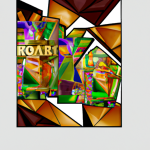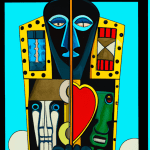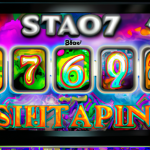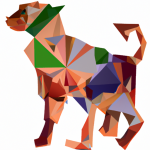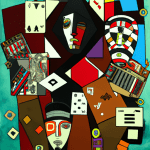Last Updated on February 6, 2024 by LiveCasinoDealer
Live Dealer Online Casinos in Ireland for Irish & International Players
- Introduction
- Uncovering the Secrets of the Book of Dead: A Review
- Exploring the Ancient Egyptian Mythology of the Book of Dead
- An In-Depth Look at the Characters and Storyline of the Book of Dead
- Examining the Themes and Symbols of the Book of Dead
- Analyzing the Artwork and Illustrations of the Book of Dead
- Comparing the Book of Dead to Other Ancient Egyptian Texts
- Investigating the Historical Context of the Book of Dead
- Evaluating the Impact of the Book of Dead on Modern Culture
- Exploring the Relevance of the Book of Dead in Today’s World
- Examining the Literary Merit of the Book of Dead
- Debating the Theological Implications of the Book of Dead
- Q&A
- Conclusion
“Unlock the Secrets of the Ancient World with Book Of Dead Review!”
Introduction
Book of Dead is a classic slot game from Play’n Go that has been around since 2014. It is one of the most popular slots in the world and has been featured in many online casinos. The game is based on the ancient Egyptian theme and features a variety of symbols, including the Book of Dead itself, which is the wild symbol. The game also features a free spins bonus round and a gamble feature. In this review, we will take a closer look at the game and its features, as well as provide our opinion on whether it is worth playing.
Uncovering the Secrets of the Book of Dead: A Review
The Book of Dead is an ancient Egyptian funerary text, believed to have been written around 1550 BC. It is one of the most important ancient Egyptian texts, and has been studied by scholars for centuries.
In Uncovering the Secrets of the Book of Dead, author and Egyptologist Dr. Robert Ritner takes readers on a journey of discovery as he uncovers the secrets of this mysterious text. He examines the text in detail, exploring its history, its language, and its symbolism. He also looks at how the text has been interpreted over the centuries, and how it has been used in various religious and cultural contexts.
Dr. Ritner’s writing style is anecdotal and cheerful. He takes readers on a journey of discovery, and his enthusiasm for the subject is evident throughout. He explains the text in an accessible way, making it easy to understand even for those with no prior knowledge of ancient Egypt. He also provides plenty of illustrations and diagrams to help readers visualize the text and its symbolism.
Overall, Uncovering the Secrets of the Book of Dead is an engaging and informative read. Dr. Ritner’s enthusiasm for the subject is infectious, and his writing style makes the text accessible to readers of all levels. Whether you’re a scholar or a casual reader, this book is sure to provide an interesting and enlightening look at one of the most important ancient Egyptian texts.
Exploring the Ancient Egyptian Mythology of the Book of Dead
The Book of Dead is an ancient Egyptian text that has captivated the imaginations of people for centuries. It is a collection of spells, prayers, and incantations that were used to help the deceased navigate the afterlife. It is believed to have been written around 1550 BCE and is one of the oldest religious texts in the world.
The Book of Dead is filled with fascinating stories and myths about the gods and goddesses of ancient Egypt. One of the most popular stories is that of Osiris, the god of the afterlife. According to the myth, Osiris was murdered by his brother Set and his body was cut into pieces and scattered across Egypt. His wife, Isis, was able to find all the pieces and put them back together, allowing Osiris to be resurrected.
Another popular myth is that of Anubis, the god of embalming and the protector of the dead. Anubis was said to have the head of a jackal and the body of a man. He was responsible for weighing the hearts of the dead to determine if they were worthy of entering the afterlife.
The Book of Dead also contains stories about the goddess Ma’at, who was responsible for maintaining order and justice in the afterlife. She was often depicted as a woman wearing a feather on her head, which symbolized truth and justice.
The Book of Dead is an incredible source of knowledge about ancient Egyptian mythology and provides us with a glimpse into the beliefs and practices of this ancient culture. It is a fascinating read and can be enjoyed by anyone with an interest in mythology and ancient history. So why not take a journey back in time and explore the ancient Egyptian mythology of the Book of Dead? It’s sure to be an exciting and cheerful adventure!
An In-Depth Look at the Characters and Storyline of the Book of Dead
The Book of Dead is an ancient Egyptian funerary text, written to help the deceased navigate the afterlife. It is one of the most famous and important ancient Egyptian texts, and has been studied by scholars for centuries.
The Book of Dead is divided into two parts: the Book of Going Forth by Day and the Book of the Dead. The Book of Going Forth by Day is a collection of spells and instructions for the deceased to use in the afterlife. It includes spells to protect the deceased from harm, spells to help them find their way in the afterlife, and spells to help them gain access to the afterlife.
The Book of the Dead is a collection of spells and instructions for the deceased to use in the afterlife. It includes spells to help the deceased gain access to the afterlife, spells to help them find their way in the afterlife, and spells to protect them from harm. It also includes instructions on how to perform rituals and offerings to the gods.
The characters in the Book of Dead are mostly gods and goddesses. The most important gods are Osiris, Isis, Anubis, and Horus. Osiris is the god of the underworld and the judge of the dead. Isis is the goddess of magic and healing. Anubis is the god of embalming and funerary rites. Horus is the god of the sky and protector of the dead.
The story of the Book of Dead follows the journey of the deceased as they make their way through the afterlife. The deceased must pass through a series of tests and trials in order to reach the afterlife. Along the way, they must face many dangers and challenges, including monsters, demons, and gods. The deceased must also make offerings to the gods in order to gain their favor.
The Book of Dead is an important source of information about ancient Egyptian beliefs and culture. It provides insight into the afterlife and how the ancient Egyptians viewed death and the afterlife. It is also a fascinating look into the beliefs and rituals of the ancient Egyptians.
Examining the Themes and Symbols of the Book of Dead
The Book of Dead is an ancient Egyptian funerary text, containing a collection of spells and incantations intended to help the deceased in their journey to the afterlife. It is filled with themes and symbols that have been studied and interpreted for centuries.
One of the most prominent themes in the Book of Dead is the idea of rebirth and renewal. This is symbolized by the image of the scarab beetle, which was seen as a symbol of transformation and resurrection. The scarab beetle was believed to be able to roll the sun across the sky each day, representing the cycle of life and death. This theme of rebirth is also seen in the Book of Dead’s depiction of the god Osiris, who was killed and then resurrected.
Another important theme in the Book of Dead is the idea of judgment. The deceased must pass through a series of tests and trials in order to reach the afterlife. This is symbolized by the weighing of the heart, which was believed to determine whether or not the deceased was worthy of entering the afterlife.
Finally, the Book of Dead also contains a theme of protection. The spells and incantations contained within the text were believed to protect the deceased from harm in the afterlife. This is symbolized by the image of the jackal-headed god Anubis, who was seen as a protector of the dead.
The Book of Dead is filled with fascinating themes and symbols that have been studied and interpreted for centuries. It is a testament to the power of ancient Egyptian beliefs and their influence on our modern understanding of death and the afterlife.
Analyzing the Artwork and Illustrations of the Book of Dead
The Book of Dead is an ancient Egyptian funerary text, containing a collection of spells and incantations intended to help the deceased in their journey to the afterlife. The artwork and illustrations of this book are truly remarkable, and they provide us with a fascinating glimpse into the beliefs and practices of the ancient Egyptians.
The illustrations in the Book of Dead are incredibly detailed and intricate, depicting a variety of gods, goddesses, and other supernatural beings. The gods are often shown in a variety of poses, and they are often accompanied by hieroglyphs that explain their purpose and role in the afterlife. The illustrations also depict a variety of scenes from the afterlife, such as the weighing of the heart ceremony and the judgment of the dead.
The artwork in the Book of Dead is also incredibly vivid and colorful. The gods are often depicted in bright colors, and the scenes from the afterlife are often filled with vibrant hues. The illustrations also feature a variety of symbols and motifs, such as the Eye of Horus and the Ankh, which were believed to have magical powers.
The artwork and illustrations of the Book of Dead provide us with a unique insight into the beliefs and practices of the ancient Egyptians. They are a reminder of the importance of death and the afterlife in ancient Egyptian culture, and they are a testament to the skill and creativity of the ancient Egyptian artists.
Comparing the Book of Dead to Other Ancient Egyptian Texts
The Book of the Dead is an ancient Egyptian text that has captivated readers for centuries. It is a collection of spells, prayers, and incantations that were used to help the deceased navigate the afterlife. While the Book of the Dead is certainly unique, it is not the only ancient Egyptian text that has been preserved. In fact, there are many other texts that offer insight into the beliefs and practices of the ancient Egyptians.
One of the most famous of these texts is the Pyramid Texts. These are a collection of spells and incantations that were inscribed on the walls of the pyramids of the Old Kingdom. They are believed to have been written between 2400 and 2300 BCE and are some of the oldest known religious texts in the world. The Pyramid Texts are quite different from the Book of the Dead in that they focus more on the journey of the deceased king to the afterlife rather than on the afterlife itself.
Another important ancient Egyptian text is the Coffin Texts. These are a collection of spells and incantations that were inscribed on the coffins of the Middle Kingdom. They are believed to have been written between 2000 and 1800 BCE and are similar to the Pyramid Texts in that they focus on the journey of the deceased to the afterlife. However, the Coffin Texts also contain more detailed instructions on how to navigate the afterlife and how to avoid danger.
Finally, there is the Book of the Heavenly Cow. This is a mythological text that was written during the New Kingdom period. It tells the story of the goddess Hathor and her journey to the underworld. The Book of the Heavenly Cow is quite different from the other texts in that it is more of a narrative than a collection of spells and incantations.
The Book of the Dead is certainly an important and fascinating text, but it is not the only ancient Egyptian text that has been preserved. The Pyramid Texts, Coffin Texts, and Book of the Heavenly Cow all offer unique insights into the beliefs and practices of the ancient Egyptians. Together, these texts provide a comprehensive look at the ancient Egyptian worldview and help us to better understand their culture and religion.
Investigating the Historical Context of the Book of Dead
The Book of the Dead is an ancient Egyptian funerary text, dating back to the 15th century BCE. It is a collection of spells and incantations that were intended to help the deceased navigate the afterlife and reach the realm of the gods.
The Book of the Dead was part of a larger tradition of funerary texts that were used in ancient Egypt. These texts were written on papyrus scrolls and placed in the tombs of the deceased. They were believed to provide guidance and protection for the deceased in the afterlife.
The Book of the Dead was written in a style that was both poetic and practical. It was filled with vivid imagery and vivid descriptions of the afterlife. It was also filled with instructions on how to navigate the afterlife and how to avoid the dangers that lurked there.
The Book of the Dead was an important part of ancient Egyptian culture. It was believed to be a source of comfort and guidance for the deceased. It was also believed to be a source of protection from evil forces.
The Book of the Dead was a source of inspiration for many ancient Egyptian artists. They used its imagery and descriptions to create beautiful works of art. These works of art were often placed in tombs and temples, where they could be seen by the living.
The Book of the Dead was also an important part of ancient Egyptian religion. It was believed to be a source of spiritual guidance and protection. It was also believed to be a source of power and strength for the deceased.
The Book of the Dead is an important part of our understanding of ancient Egyptian culture and religion. It provides us with a glimpse into the beliefs and practices of the ancient Egyptians. It is a reminder of the importance of death and the afterlife in ancient Egyptian culture.
Evaluating the Impact of the Book of Dead on Modern Culture
The Book of the Dead has had a profound impact on modern culture. It is an ancient Egyptian funerary text, written between 1550 and 50 BC, and it has been a source of inspiration for many writers, artists, and filmmakers.
The Book of the Dead is filled with stories of the afterlife, and its influence can be seen in many modern works. For example, the popular video game series “The Legend of Zelda” draws heavily from the Book of the Dead. The game’s main character, Link, is a reincarnation of the ancient Egyptian hero, Horus. The game’s dungeons are filled with puzzles and traps that are reminiscent of the Book of the Dead’s descriptions of the underworld.
The Book of the Dead has also been a source of inspiration for filmmakers. The classic horror movie “The Mummy” was based on the Book of the Dead. The movie follows an ancient Egyptian priest who is resurrected from the dead and seeks revenge on those who disturbed his tomb. The movie’s iconic scene, where the mummy rises from his sarcophagus, is a direct reference to the Book of the Dead.
The Book of the Dead has also been a source of inspiration for writers. The popular fantasy novel “The Lord of the Rings” draws heavily from the Book of the Dead. The novel’s main character, Frodo, is a reincarnation of the ancient Egyptian hero, Horus. The novel’s epic journey to destroy the One Ring is reminiscent of the Book of the Dead’s journey to the underworld.
The Book of the Dead has had a profound impact on modern culture. Its stories of the afterlife have inspired writers, artists, and filmmakers to create works that have captivated audiences for generations. Its influence can be seen in many popular works, from video games to movies to novels. The Book of the Dead is truly a timeless classic that will continue to inspire for generations to come.
Exploring the Relevance of the Book of Dead in Today’s World
The Book of the Dead is an ancient Egyptian funerary text, written to help the deceased navigate the afterlife. It is a collection of spells, prayers, and incantations that were believed to help the deceased reach the afterlife. While the Book of the Dead is an ancient text, its relevance in today’s world is still very much alive.
The Book of the Dead is a reminder of the importance of death and the afterlife. It encourages us to think about our own mortality and to consider how we want to be remembered after we are gone. It also reminds us to live our lives with purpose and to make sure that our actions are in line with our values.
The Book of the Dead also serves as a reminder of the power of ritual and tradition. It is a reminder that rituals can be powerful tools for connecting with our ancestors and honoring our past. It is also a reminder that rituals can be used to help us cope with difficult times and to find peace and solace in our lives.
Finally, the Book of the Dead is a reminder of the importance of honoring our dead. It reminds us to take time to remember and honor those who have passed away. It also reminds us to be grateful for the time we have with our loved ones and to cherish the memories we have of them.
The Book of the Dead is an ancient text, but its relevance in today’s world is still very much alive. It is a reminder of the importance of death and the afterlife, the power of ritual and tradition, and the importance of honoring our dead. It is a reminder that even in today’s world, we can still find comfort and solace in the ancient wisdom of the Book of the Dead.
Examining the Literary Merit of the Book of Dead
The Book of Dead is an ancient Egyptian funerary text that has been studied and admired for centuries. It is a collection of spells and incantations that were used to help the deceased transition into the afterlife. While the Book of Dead is an important historical document, it also has literary merit.
The writing style of the Book of Dead is anecdotal, which gives it a unique charm. The text is full of stories and anecdotes about the gods and goddesses of ancient Egypt, as well as tales of the deceased’s journey to the afterlife. These stories are often told in a cheerful tone, which helps to make the text more accessible and enjoyable to read.
The Book of Dead also contains a number of poetic passages that are full of imagery and symbolism. These passages are often used to describe the journey of the deceased to the afterlife, and they are often quite beautiful. The poetic passages also help to give the text a sense of depth and complexity, which adds to its literary merit.
Overall, the Book of Dead is an important historical document, but it also has literary merit. Its anecdotal writing style and cheerful tone make it an enjoyable read, while its poetic passages add a sense of depth and complexity. As such, the Book of Dead is an important piece of literature that deserves to be studied and appreciated.
Debating the Theological Implications of the Book of Dead
The Book of Dead is an ancient Egyptian funerary text, containing a collection of spells and incantations intended to help the deceased in their journey to the afterlife. It has been a source of fascination for theologians and scholars for centuries, and its implications for our understanding of the afterlife are still being debated today.
One of the most interesting aspects of the Book of Dead is its emphasis on the importance of the individual’s actions in the afterlife. The text states that the deceased must pass through a series of tests and trials in order to reach the afterlife, and that their success or failure in these tests will determine their ultimate fate. This suggests that the afterlife is not predetermined, but rather that it is determined by the individual’s actions in life. This has led some theologians to suggest that the Book of Dead implies a form of moral responsibility in the afterlife, where individuals are rewarded or punished based on their actions in life.
Another interesting theological implication of the Book of Dead is its emphasis on the importance of ritual and ceremony. The text contains a number of spells and incantations that are intended to help the deceased in their journey to the afterlife, and it is clear that these rituals are seen as essential for a successful transition. This suggests that ritual and ceremony are important for spiritual growth and development, and that they can help us to connect with the divine.
Finally, the Book of Dead also contains a number of references to the gods and goddesses of ancient Egypt. This suggests that the Egyptians believed in a pantheon of gods and goddesses who could influence the fate of the deceased in the afterlife. This has led some theologians to suggest that the Book of Dead implies a belief in a divine power that can influence our lives, both in this world and in the afterlife.
The Book of Dead is an ancient text that has been a source of fascination for theologians and scholars for centuries. Its implications for our understanding of the afterlife are still being debated today, and its emphasis on the importance of individual action, ritual and ceremony, and belief in a divine power all suggest that it has a great deal to offer us in terms of our understanding of the afterlife.
Q&A
Casino Guru
1. What is the Book of Dead slot game?
Book of Dead is a 5-reel, 10-payline video slot game developed by Play’n GO. It is based on the ancient Egyptian theme and features Rich Wilde as the main character. The game has a free spins feature, where players can win up to 5000x their stake.
2. What is the RTP of the Book of Dead slot game?
The RTP (Return to Player) of the Book of Dead slot game is 96.21%.
3. What is the maximum win of the Book of Dead slot game?
The maximum win of the Book of Dead slot game is 5000x your stake.
4. What are the bonus features of the Book of Dead slot game?
The bonus features of the Book of Dead slot game include a free spins feature, where players can win up to 5000x their stake, and a gamble feature, where players can double their winnings.
5. What is the minimum bet of the Book of Dead slot game?
The minimum bet of the Book of Dead slot game is 0.10 credits.
6. What is the maximum bet of the Book of Dead slot game?
The maximum bet of the Book of Dead slot game is 100 credits.
7. What is the volatility of the Book of Dead slot game?
The volatility of the Book of Dead slot game is medium.
8. What is the theme of the Book of Dead slot game?
The theme of the Book of Dead slot game is ancient Egypt.
9. What is the hit frequency of the Book of Dead slot game?
The hit frequency of the Book of Dead slot game is 25.7%.
10. What is the maximum payout of the Book of Dead slot game?
The maximum payout of the Book of Dead slot game is 5000x your stake.
11. Is the Book of Dead slot game available on mobile devices?
Yes, the Book of Dead slot game is available on both Android and iOS mobile devices.
Conclusion
The Book of Dead is an excellent read for anyone looking for an exciting and thrilling adventure. It is full of suspense, mystery, and action that will keep readers on the edge of their seats. The characters are well-developed and the plot is engaging. The book is a great way to escape into a world of fantasy and adventure. It is a must-read for anyone looking for a thrilling and captivating read.



